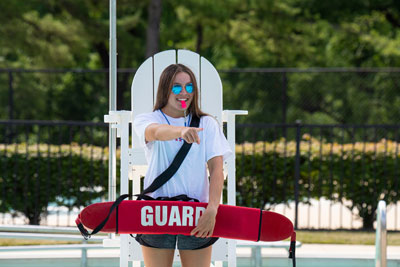A “partnership,” per the Miriam-Webster dictionary, is “the state of being a partner: a relationship involving close cooperation between parties having specified and joint rights and responsibilities.”

However, partnerships, in my mind, have a much broader and “friendlier” meaning. Being successful in the industry of aquatics and drowning prevention, or in any industry for that matter, takes the mindset of collaborating together with everyone to ensure that we are all meeting the needs of our constituents, communities, members, colleagues, etc. These relationships that we develop assist us all in doing and being better.
Through partnerships and collaborations, we are able to meet the needs of a wide variety of individuals. The first step in successful partnerships and collaborations is to ensure that the group or groups that you are working with have similar goals and objectives.
Through my experience I have developed seven basic requirements for partnerships or collaborations to be successful:
- Communication: Communicate the goals of the partnership to ensure that all groups are on the same page. Open communication during this first step is imperative to the partnership’s success. A large part of this comes down to openness, trust and honesty in what meets the needs of everyone’s groups or organizations. Frequent discussions and updates throughout the partnership are imperative to its success. Communicating at regular intervals ensures that any adjustments may be made at any time if they are needed.
- Collaboration/Combination: When developing a collaboration, a discussion must take place about the best way to intertwine the organizations or offerings. Partnerships are external collaborations when two or more organizations work together toward a common goal. Through these collaborations, we are able to work together to generate lots of new and exciting ideas that will assist with getting the work done.
- Consideration: Make sure to take into consideration the needs of all the groups involved. Their needs might be a bit different than yours, and you will want to make sure that you are open to a discussion that their needs might be a bit different than yours.
- Compromise: This is probably one of the most important aspects of any and all partnerships. When multiple groups are working together it is important to discuss all aspects of the project, event, etc. You want to make sure that all groups are open to making concessions to make sure that the outcomes meet most of everyone’s needs.
- Commitment: In the end it all comes down to a commitment to each other in order to ensure that the relationship is a positive one that benefits both or all groups. Commitment and collaborations will lead to potential improvements in regard to the outcome of the event. The discussion of common goals and outcomes at the start will make sure that the commitment is there to succeed.
- Completion: Successful completion of an event involving a partnership or collaboration is the perfect time to congratulate yourselves on a job well done. Take a moment to rest and relax, and then, get back to planning for the future.
- Critique: If this collaboration is for an actual event, ensure that you discuss the overall aspects of the partnership and adjust as needed. Although success can and does get judged by the feedback from your attendees and governing bodies, it is also judged by meeting clear goals and objectives. After an event it is imperative to discuss with your partners exactly what went well, what could be improved and changes that you might both like to see take place. This part of a partnership or collaboration will be what makes it a continued success.
Make sure that all partnerships create a win-win proposition for all of those involved. Whether they are large groups or small, they are all important to the overall process.
I want to give a huge shout out to Adam Katchmarchi, executive director of the National Drowning Prevention Alliance (NDPA). The collaboration between AOAP and NDPA has been a huge success, and we look forward to growing our drowning prevention education and training with you. RM
ABOUT THE AUTHOR
Juliene Hefter is executive director and CEO of the Association of Aquatic Professionals. AOAP is a cutting-edge nonprofit with a mission to foster networking, education, advocacy and development opportunities for professionals across all areas of aquatics.



